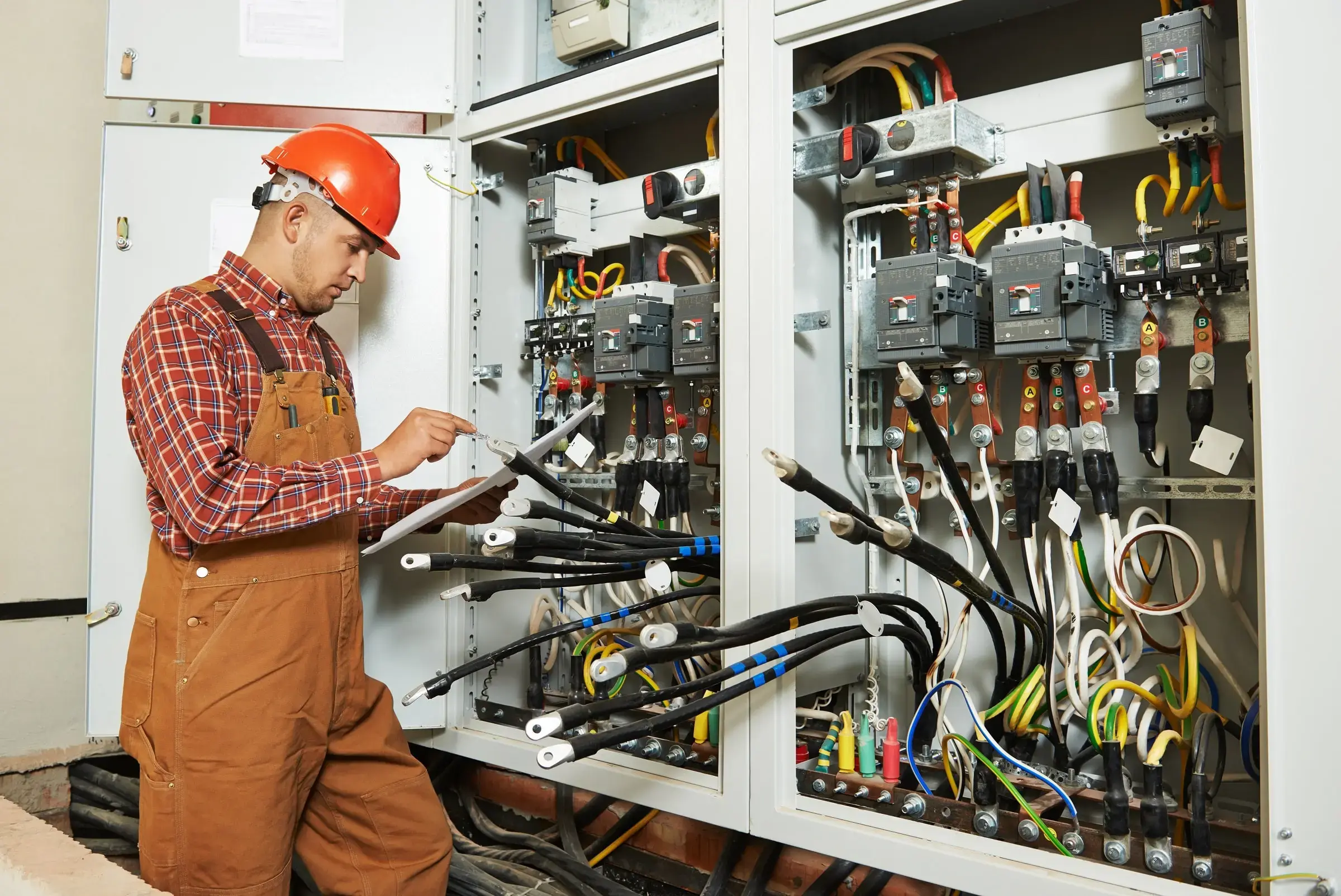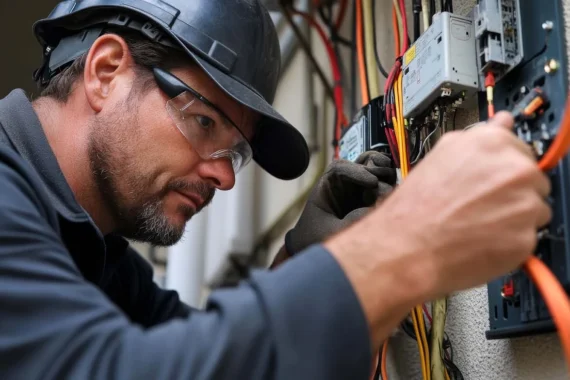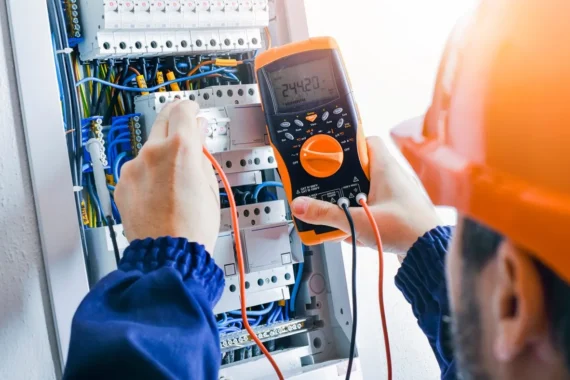The electricity humming through our walls is the unseen lifeblood of modern existence. It powers our morning coffee, illuminates our workspaces, drives our industries, and connects us globally. Yet, the systems delivering this essential force are far from monolithic. Commercial Electrical Work and its residential counterpart represent distinct disciplines, each with its own complexities, codes, and critical importance. Understanding this divide isn’t just academic trivia; it’s crucial for safety, efficiency, and ensuring the right expertise is applied to the right project. This exploration delves deep into the fascinating world of both realms, illuminating their unique characteristics, challenges, and the specialized knowledge that keeps our lights on and our businesses running.
Illuminating the Divide: Why Residential and Commercial Are Worlds Apart
At first glance, wiring might seem like wiring. However, the fundamental differences between powering a home and energizing a Commercial Electrical Workenterprise are profound and start with the very nature of the demand. Residential electrical systems primarily serve the predictable, relatively low-power needs of families and individuals. Think lighting, appliances, entertainment systems, and climate control within a single dwelling. The scale is manageable, the load patterns follow daily routines, and the infrastructure is generally standardized.
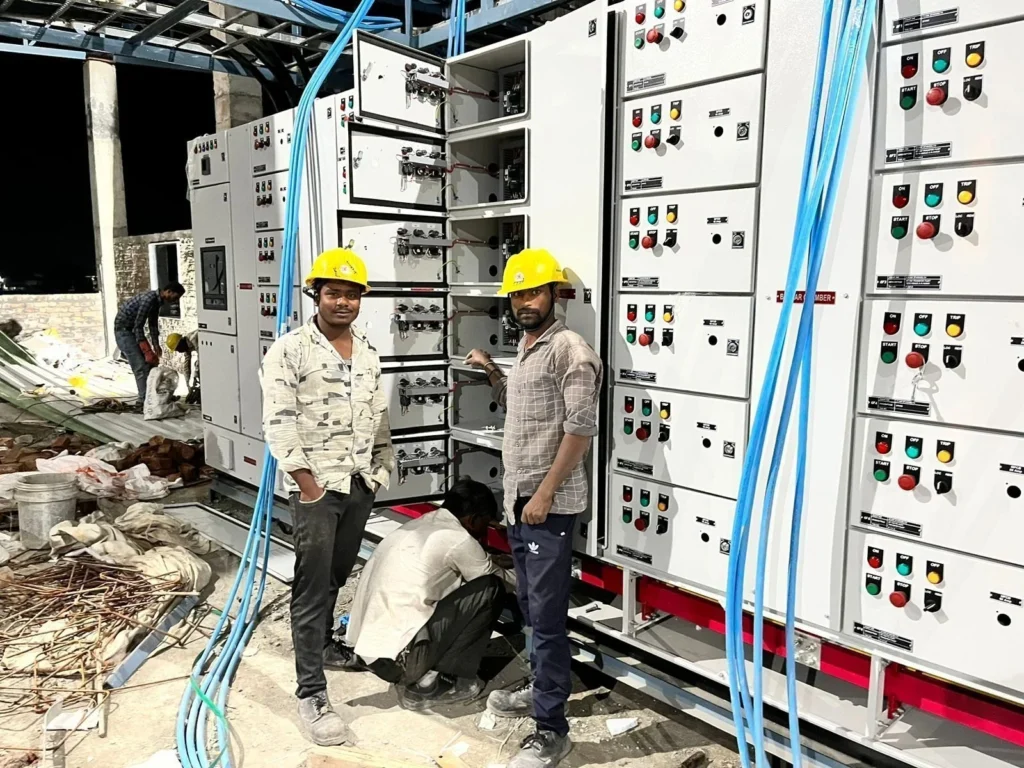
Conversely, Commercial Electrical Work confronts a vastly different beast. These systems must support diverse, often high-demand operations: powerful HVAC units for large spaces, extensive lighting grids, complex machinery, data centers, commercial kitchens, medical equipment, and potentially hundreds of simultaneous users. The sheer scale of power required necessitates different voltages, distribution methods, and far more intricate planning. Furthermore, commercial environments are dynamic; businesses grow, layouts change, and technology evolves rapidly, demanding electrical systems built not just for today, but with significant foresight for tomorrow’s needs. The stakes are also inherently higher, impacting not just comfort but productivity, safety for larger groups, and significant financial investments.
The Residential Realm: Powering Comfort, Safety, and Modern Living
Residential electrical work focuses on creating safe, functional, and comfortable environments within homes, apartments, and smaller multi-family units. Electricians in this domain are masters of the National Electrical Code (NEC) as it applies to dwellings, ensuring systems protect occupants from shock and fire hazards. Common tasks include installing and upgrading service panels (breaker boxes), wiring new circuits for rooms or additions, adding outlets and switches, installing lighting fixtures (indoor and outdoor), setting up ceiling fans, and integrating home automation systems like smart thermostats or lighting controls.
Moreover, the residential electrician is often the troubleshooter, diagnosing and repairing faults like tripped breakers, flickering lights, dead outlets, or potential hazards like outdated knob-and-tube wiring or aluminum branch circuits. They play a vital role in renovations, ensuring electrical systems meet current code during kitchen or bathroom remodels. Increasingly, residential work involves integrating renewable energy sources like solar panels and supporting the burgeoning demand for Electric Vehicle (EV) charging stations, requiring upgrades to existing services and careful circuit planning. Their work directly impacts the daily safety, convenience, and efficiency of family life.
The Engine of Enterprise: Demystifying Commercial Electrical Work
Stepping into the commercial arena, Commercial Electrical Work operates on an entirely different magnitude and complexity. This domain encompasses the design, installation, maintenance, and repair of electrical systems in offices, retail stores, restaurants, factories, warehouses, hospitals, schools, data centers, and high-rise buildings. The core distinction lies in the three-phase power systems predominantly used. Unlike the single-phase power common in homes, three-phase delivers power more efficiently and consistently, essential for running large motors, industrial equipment, and handling the substantial electrical loads typical in commercial settings without causing voltage drops or inefficiencies.
Consequently, Commercial Electrical Work involves significantly more complex distribution networks. This includes large main switchgear, step-down transformers, extensive sub-panels, bus ducts, and intricate conduit runs managing hundreds or thousands of circuits. Commercial electricians must be adept at interpreting complex blueprints and engineering specifications, coordinating with other trades (like HVAC, plumbing, and data), and adhering to a stricter subset of the NEC alongside potentially additional local codes and standards (like NFPA 70E for workplace electrical safety). The focus extends beyond basic functionality to ensuring systems support business continuity, high availability (especially in critical environments like hospitals or data centers), and scalability for future expansion. Reliability isn’t just desirable; it’s often mission-critical.
Voltage, Scale, and Complexity: Key Differentiators Explored
The divergence between residential and commercial systems manifests concretely in several key areas. Firstly, voltage: while residential systems typically operate at 120/240 volts (single-phase), Commercial Electrical Work frequently utilizes 120/208 volts or 277/480 volts (three-phase). This higher voltage, particularly 480V, is essential for efficiently powering large equipment but introduces significantly greater arc flash hazards, demanding specialized safety protocols and personal protective equipment (PPE) that go far beyond residential requirements.
Secondly, the sheer scale is incomparable. A large home might have a 200-amp service panel with 30-40 circuits. A moderate-sized commercial building could easily require a 1200-amp or larger service entrance, feeding dozens of sub-panels managing hundreds of circuits. The physical infrastructure – conduit sizes, wire gauges, transformer capacities – scales up dramatically. Thirdly, complexity skyrockets. Commercial Electrical Work involves intricate control systems for lighting (often requiring complex switching, dimming, or building automation integration), specialized circuits for heavy machinery, backup power systems (generators and UPS), sophisticated fire alarm and emergency lighting systems, and extensive data/communication cabling pathways that must be integrated and segregated correctly. The level of planning and coordination is exponentially higher.
The Code Conductor: Navigating Regulations in Both Arenas
Both residential and Commercial Electrical Work Both residential and operate under the umbrella of the National Electrical Code (NEC), published by the National Fire Protection Association (NFPA). This code is the paramount standard for safe electrical installation in the United States, adopted (often with local amendments) by most jurisdictions. Its primary goal is the practical safeguarding of persons and property from hazards arising from the use of electricity. Adherence isn’t optional; it’s legally mandated and fundamental to passing inspections.
operate under the umbrella of the National Electrical Code (NEC), published by the National Fire Protection Association (NFPA). This code is the paramount standard for safe electrical installation in the United States, adopted (often with local amendments) by most jurisdictions. Its primary goal is the practical safeguarding of persons and property from hazards arising from the use of electricity. Adherence isn’t optional; it’s legally mandated and fundamental to passing inspections.
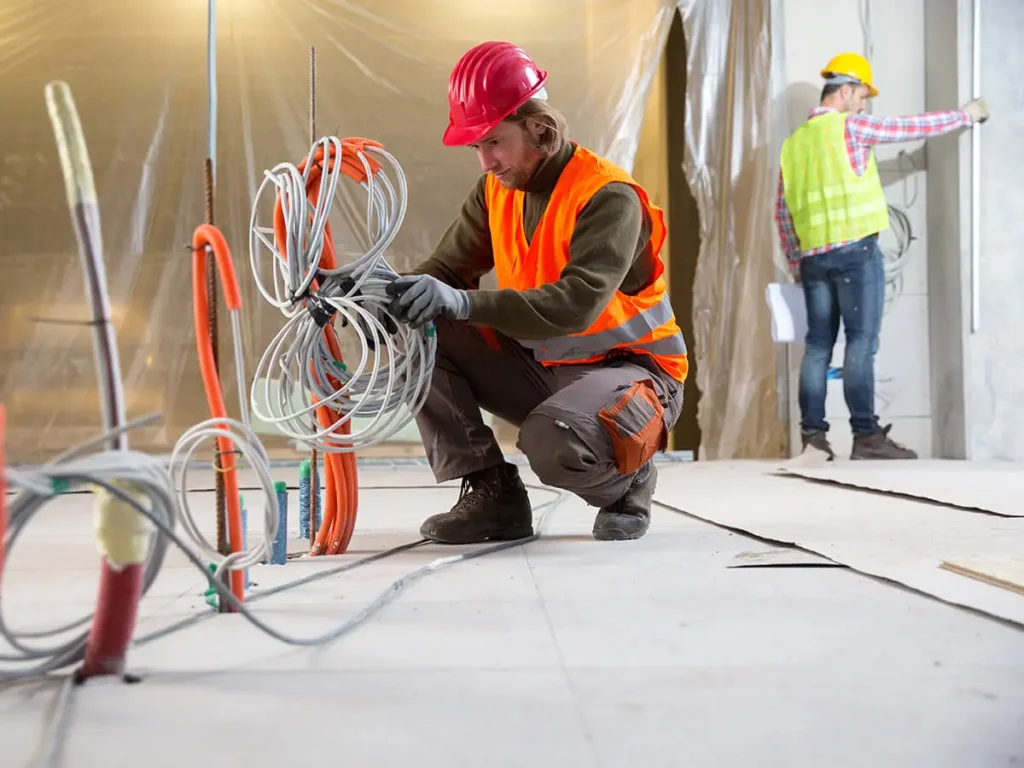
However, the application of the code diverges significantly. Residential electricians focus intensely on sections pertaining to dwelling units (like Article 210 Branch Circuits, Article 230 Services, Article 404 Switches). Their code knowledge is deep but focused on single-phase systems and typical home applications. Commercial Electrical Work, conversely, demands mastery of a much broader swath of the NEC. Electricians must be fluent in sections covering feeders, overcurrent protection for complex distribution, grounding and bonding for large systems, requirements for specific occupancies (like hazardous locations in Article 500, healthcare facilities in Article 517, or places of assembly), and the stringent rules around overcurrent device coordination to ensure faults are cleared selectively without causing unnecessary outages. Understanding the nuances and exceptions within the code for commercial applications is a specialized skill in itself.
Masters of the Trade: Licensing, Training, and Specialization
Becoming a qualified electrician, whether residential or commercial, requires significant training and licensing. The path typically starts with an apprenticeship program, combining thousands of hours of paid on-the-job training under a journeyman or master electrician with hundreds of hours of classroom instruction covering electrical theory, code, blueprint reading, safety, and trade mathematics. Apprenticeships usually last 4-5 years. Following this, individuals must pass a rigorous licensing exam to become a Journeyman Electrician, demonstrating competence to perform electrical work independently within the scope defined by their license type and local regulations.
This is where specialization often emerges. While a journeyman license might cover both residential and commercial work in some areas, the vast complexity of Commercial Electrical Work naturally leads many electricians to specialize. They gain deeper experience with three-phase systems, large distribution gear, motor controls, programmable logic controllers (PLCs), and specific commercial/industrial systems. Advancing further, a Master Electrician license requires additional experience (often 2+ years as a journeyman) and passing an even more comprehensive exam. Master Electricians are qualified to design systems, obtain permits, and supervise electrical work. Specialized certifications in areas like instrumentation, hazardous locations, or specific control systems are also common in the commercial/industrial sector, reflecting the higher technical demands.
Safety: The Uncompromising Current in Every Wire
Electrical safety is paramount, regardless of the setting. The consequences of failure – electric shock, arc flash, arc blast, fire – are severe and potentially fatal. Both residential and commercial electricians are rigorously trained in safety protocols, including lockout/tagout (LOTO) procedures to ensure circuits are de-energized before work begins, testing for the absence of voltage, and using insulated tools. However, the inherent risks in Commercial Electrical Work necessitate an even more intense and specialized safety focus.
The higher voltages and available fault currents in commercial and industrial settings dramatically increase the risk and potential severity of arc flash incidents – explosive releases of energy caused by electrical faults. Consequently, Commercial Electrical Work demands strict adherence to NFPA 70E: Standard for Electrical Safety in the Workplace. This involves comprehensive hazard risk assessments before any task, determining the potential incident energy levels at specific points in the system, and selecting the appropriate arc-rated flame-resistant (AR FR) clothing and PPE (face shields, hoods, gloves) based on those calculations. Establishing electrically safe work conditions through proper LOTO is even more critical, and working on or near energized parts (“hot work”) is governed by extremely stringent, permit-required procedures only undertaken when absolutely necessary and with full precautions. Safety culture isn’t just a guideline; it’s an absolute imperative woven into every aspect of commercial electrical operations.
Beyond the Basics: Technology and Specialized Systems
The electrical trade is constantly evolving, driven by technological advancements and changing demands in both residential and Commercial Electrical Work . In residential settings, smart home technology is a major driver. Electricians increasingly install and integrate Wi-Fi and Z-Wave enabled switches, dimmers, outlets, and lighting systems, often requiring robust home networks and sometimes dedicated low-voltage wiring. Home energy management systems, integrating with solar panels, battery storage, and smart meters, are also becoming more common, demanding expertise in both traditional power and data integration.
Within Commercial Electrical Work, the technological landscape is even more complex and rapidly changing. Building Automation Systems (BAS) or Building Management Systems (BMS) centrally control HVAC, lighting, security, and sometimes power distribution. Integrating electrical systems seamlessly with these networks is crucial. Sophisticated lighting control systems, including advanced sensors and daylight harvesting, are standard for energy efficiency. Data centers demand specialized, redundant power distribution (often A+B feeds), precision cooling backed by robust UPS and generator systems, and meticulous cable management. Industrial automation relies heavily on complex motor control centers (MCCs), variable frequency drives (VFDs), and PLCs, requiring electricians with strong diagnostic and programming skills. Furthermore, the push for sustainability drives the installation of large-scale solar arrays, sophisticated energy metering and monitoring systems, and EV charging infrastructure for fleets – all falling squarely under the umbrella of specialized Commercial Electrical Work.
Choosing the Right Current: Selecting an Electrical Contractor
Selecting the right electrical contractor is critical for the success, safety, and longevity of any project, whether rewiring a kitchen or building a new factory. The cardinal rule is specialization: Hire a contractor whose core expertise aligns with your project type. A primarily residential contractor, however skilled, may lack the specific experience, personnel, and equipment needed for the complexities of a commercial build-out or industrial upgrade. Conversely, a large commercial contractor might not be cost-effective or possess the nuanced understanding of older residential wiring systems for a home renovation.
For residential projects, look for licensed, insured contractors with strong local reputations, positive reviews specifically for home electrical work, and experience with projects similar to yours (e.g., old home rewires, EV charger installs, smart home integration). Request detailed quotes and verify they will pull the necessary permits and arrange inspections. For Commercial Electrical Work, due diligence is even more vital. Seek contractors with proven experience in your specific type of commercial facility (retail, office, industrial, healthcare). Verify they hold the appropriate level of licensing (often requiring a Master Electrician on staff for permits) and carry substantial liability and workers’ compensation insurance. Check their safety record and adherence to NFPA 70E. Ask for project references and examples of similar work. Evaluate their ability to handle project management, coordinate with other trades, interpret complex plans, and meet commercial schedules and budgets. Choosing based solely on the lowest bid is a recipe for potential disaster; expertise, reliability, and safety culture are paramount investments.
The Future Circuit: Emerging Trends in Electrical Work
The electrical industry is poised for significant transformation driven by technological innovation, sustainability imperatives, and changing energy landscapes. In both residential and commercial sectors, the electrification of everything continues unabated. EVs are the most visible example, driving demand for ubiquitous charging infrastructure – from simple home chargers to complex commercial and fleet charging depots, placing new demands on utility grids and requiring significant upgrades to distribution systems and on-site electrical services. Heat pumps for heating and cooling are also rapidly replacing fossil fuel systems, increasing electrical loads in homes and businesses alike.

Simultaneously, the integration of renewable energy sources is becoming mainstream. Solar panels, coupled with increasingly affordable battery storage systems, are moving beyond niche applications into standard practice for both homes and businesses seeking energy independence, resilience, and cost savings. This requires sophisticated inverters, transfer switches, and energy management systems – areas demanding specialized electrical knowledge. Microgrids – localized grids that can disconnect from the traditional grid and operate autonomously – are gaining traction, particularly for critical facilities (hospitals, data centers) and campuses, representing a complex frontier for Commercial Electrical Work. Furthermore, the rise of the Internet of Things (IoT) means more connected devices than ever, placing greater emphasis on robust, integrated power and data networks. Finally, continuous advancements in energy efficiency, from ultra-efficient LED lighting to smarter building controls, will remain a core driver, requiring electricians to be perpetual learners and adapters of new technologies. The future electrician will be part power engineer, part data specialist, and part sustainability expert.
Harnessing the Power of Specialized Expertise
The invisible network of wires that powers our lives is a testament to human ingenuity, but its safe and effective deployment is no simple feat. Recognizing the distinct worlds of residential and commercial electrical work is fundamental. While both share the common foundation of electrical principles and safety imperatives, the scale, complexity, voltage demands, code applications, and required expertise diverge dramatically. Residential work crafts the safe and comfortable environments we call home, adapting to new technologies like smart devices and EVs. Commercial Electrical Work forms the robust, high-capacity backbone of our economy, powering industries, businesses, healthcare, and institutions with complex three-phase systems, demanding rigorous safety protocols, and constantly integrating cutting-edge technology.
Choosing the right path, or the right contractor, hinges on understanding this divide. Whether you’re a homeowner planning a renovation or a business owner embarking on a new build, matching your project with the specialized expertise it requires is not just a matter of efficiency; it’s a critical investment in safety, reliability, compliance, and the long-term success of your endeavor. As technology surges forward and our reliance on electricity deepens, the role of the skilled electrician, specialized in their domain, becomes ever more vital in keeping the currents flowing safely and powering our world forward.

